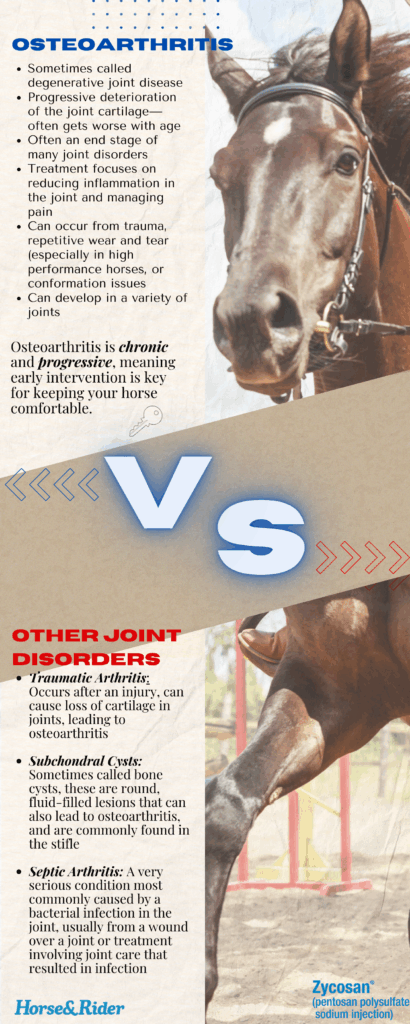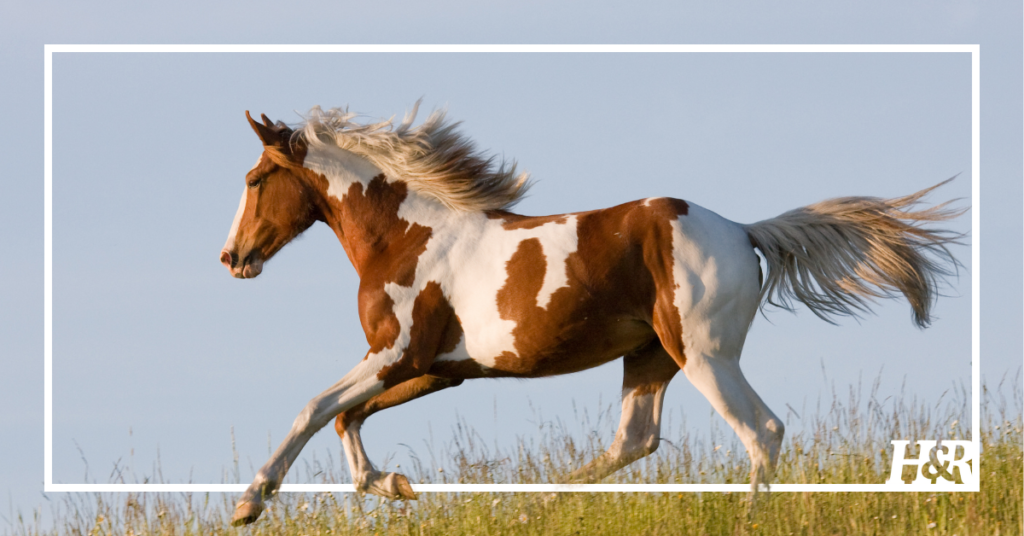It’s important to address the hard truth right away: osteoarthritis in horses cannot be cured. However, with early intervention, management plans, and specific treatments, it can be managed to maintain your horse’s comfort. Regardless of age, steps can be taken now to protect your horse’s joint health and prevent osteoarthritis.
Throughout June, we will be delving into everything you need to know about osteoarthritis (OA) in horses, thanks to our partners at Zycosan.
Here are some top tips for preventing OA and other joint conditions:
1. Weight Maintenance
Carrying excess body weight can increase the load on your horse’s joints, leading to accelerated breakdown of joint cartilage and inflammation. This can worsen or trigger osteoarthritis. Obesity also raises the risk of metabolic disorders like equine metabolic syndrome or laminitis, which can exacerbate joint issues. Maintaining a healthy weight can help your horse age comfortably and aid in osteoarthritis prevention.
2. Keep Him Moving
Movement is crucial for preventing osteoarthritis and maintaining joint health in horses. Regular exercise appropriate for your horse’s age, development, and training level can keep joints feeling good, maintain muscle tone, and reduce overall strain. Sedentary horses, especially older ones, may experience more discomfort and quicker OA progression. Consistent movement is key.

3. Stay on the Offense
Early detection of joint issues is crucial for slowing progression, managing inflammation, and preserving long-term soundness and comfort. Regular vet exams can help identify subtle changes early on and create a preventive care plan to keep your horse feeling good. Don’t wait for symptoms to worsen before taking action.
If your senior horse has OA, it’s important to keep him feeling good year-round.
4. Don’t Overwork Your Horse
Joints can be damaged by overtraining, high-impact work, poor footing, or acute injuries. Proper warm-up, cooldown, rest days, varied surfaces for training, and understanding your horse’s limits are essential for protecting joints and preventing long-term issues. Listen to your horse and avoid pushing him past his limits.
What does Osteoarthritis look like compared to other joint conditions?

5. Know When to Intervene
Supportive therapies can help slow OA progression, preserve mobility, and enhance your horse’s comfort. While joint damage cannot be reversed, the right combination of supplements, medications, and interventions can improve your horse’s quality of life. Consult your vet for preventive strategies or treatments to manage or prevent OA. Medications like Zycosan can help control clinical signs of osteoarthritis in horses and keep them comfortable and active.
Brought to you by:


